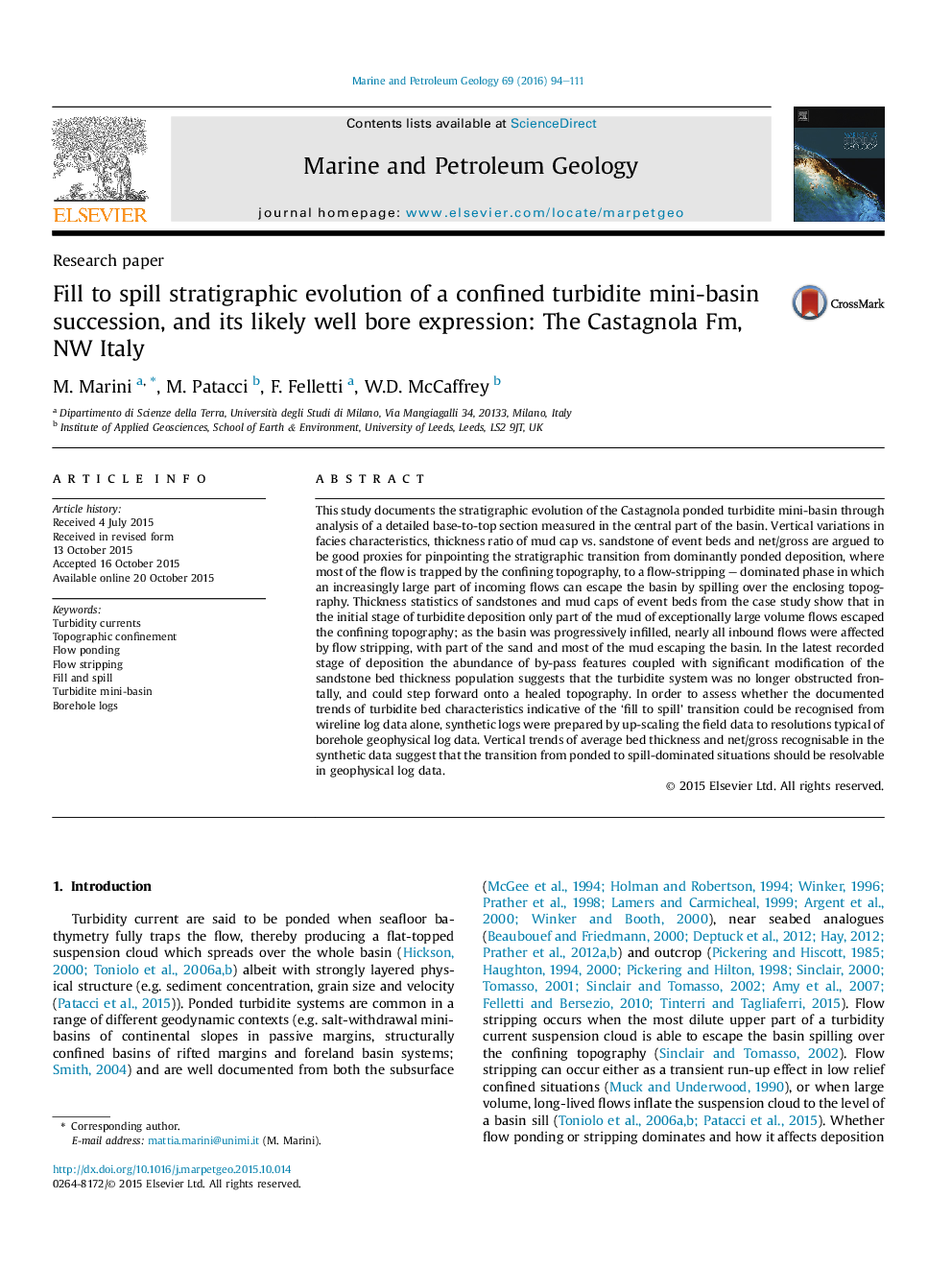| کد مقاله | کد نشریه | سال انتشار | مقاله انگلیسی | نسخه تمام متن |
|---|---|---|---|---|
| 4695468 | 1637158 | 2016 | 18 صفحه PDF | دانلود رایگان |

• We detail stratigraphic trends in facies distribution, mud cap proportion within event beds and net/gross in a ‘fill to spill’ turbidite minibasin.
• We detail relationship between flow volume and severity of sediment stripping with respect to height of the confining topography.
• We show that the mud associated with larger turbidite flows could likely escape the basin even during the initial phase of deposition.
• The transition from an almost fully-ponded condition to an unconfined condition via a flow stripping-dominated condition is documented.
• We test the applicability of the our findings to assessment of ponding from open-hole logs of a single well in a ‘fill to spill’ turbidite minibasin.
This study documents the stratigraphic evolution of the Castagnola ponded turbidite mini-basin through analysis of a detailed base-to-top section measured in the central part of the basin. Vertical variations in facies characteristics, thickness ratio of mud cap vs. sandstone of event beds and net/gross are argued to be good proxies for pinpointing the stratigraphic transition from dominantly ponded deposition, where most of the flow is trapped by the confining topography, to a flow-stripping – dominated phase in which an increasingly large part of incoming flows can escape the basin by spilling over the enclosing topography. Thickness statistics of sandstones and mud caps of event beds from the case study show that in the initial stage of turbidite deposition only part of the mud of exceptionally large volume flows escaped the confining topography; as the basin was progressively infilled, nearly all inbound flows were affected by flow stripping, with part of the sand and most of the mud escaping the basin. In the latest recorded stage of deposition the abundance of by-pass features coupled with significant modification of the sandstone bed thickness population suggests that the turbidite system was no longer obstructed frontally, and could step forward onto a healed topography. In order to assess whether the documented trends of turbidite bed characteristics indicative of the ‘fill to spill’ transition could be recognised from wireline log data alone, synthetic logs were prepared by up-scaling the field data to resolutions typical of borehole geophysical log data. Vertical trends of average bed thickness and net/gross recognisable in the synthetic data suggest that the transition from ponded to spill-dominated situations should be resolvable in geophysical log data.
Journal: Marine and Petroleum Geology - Volume 69, January 2016, Pages 94–111